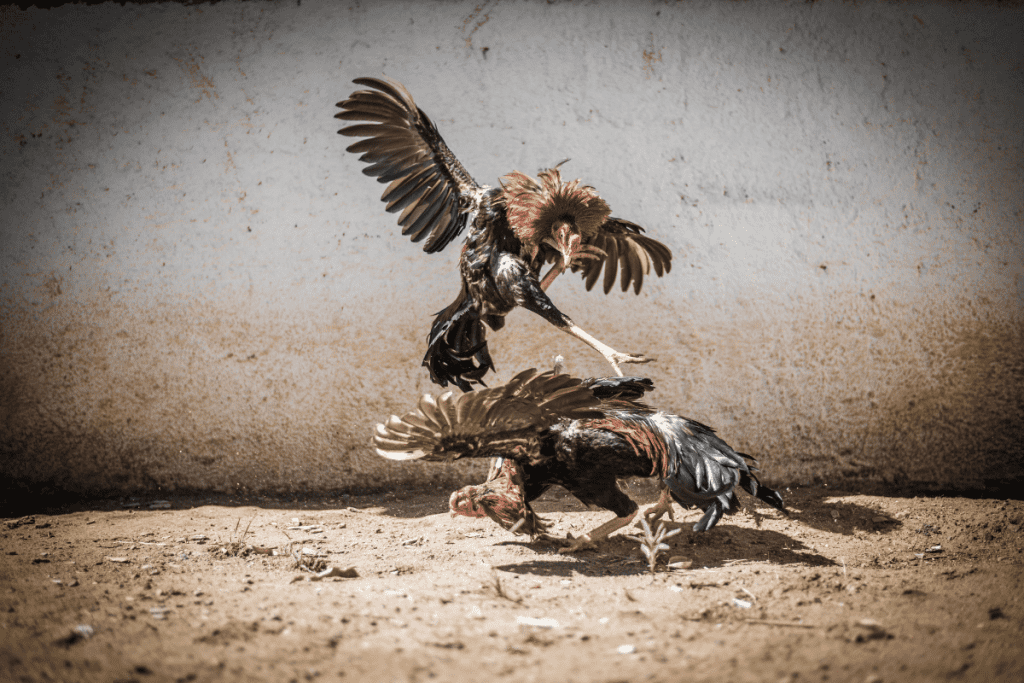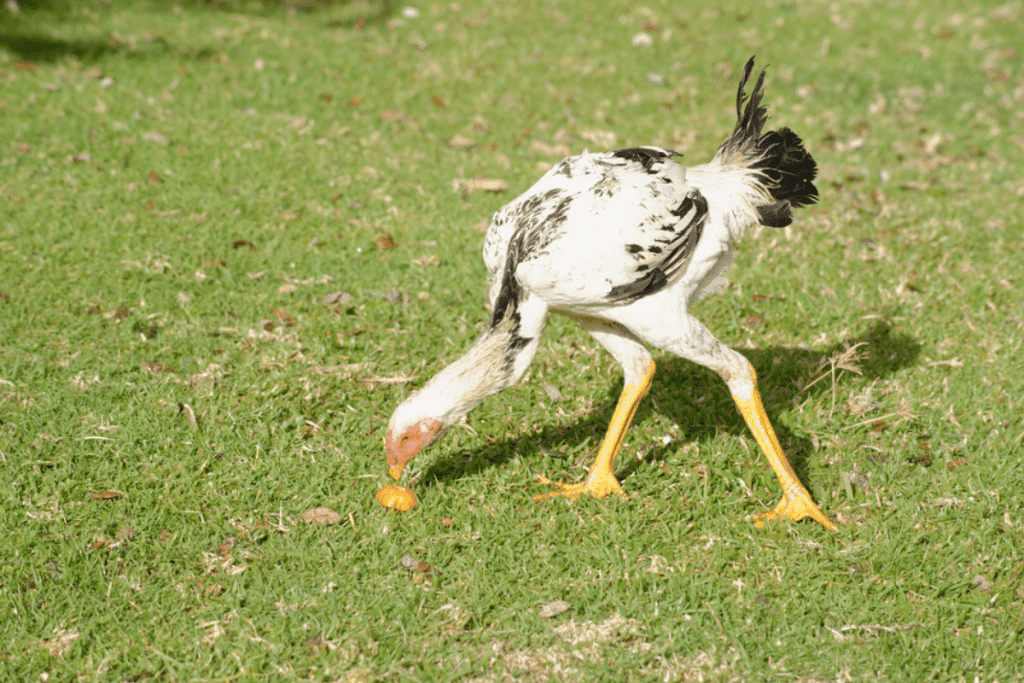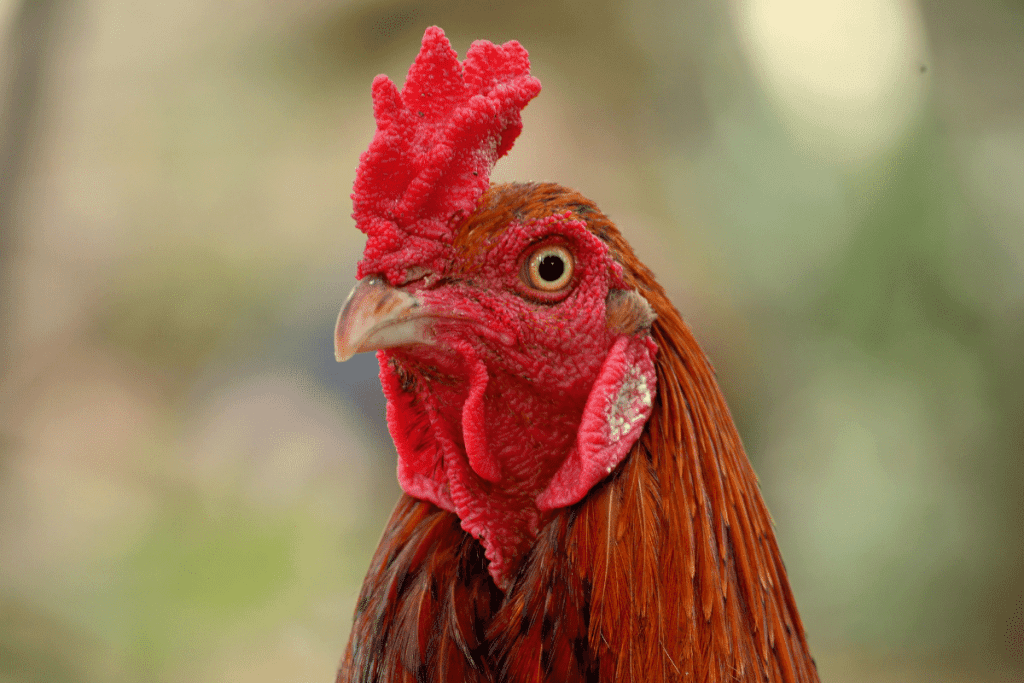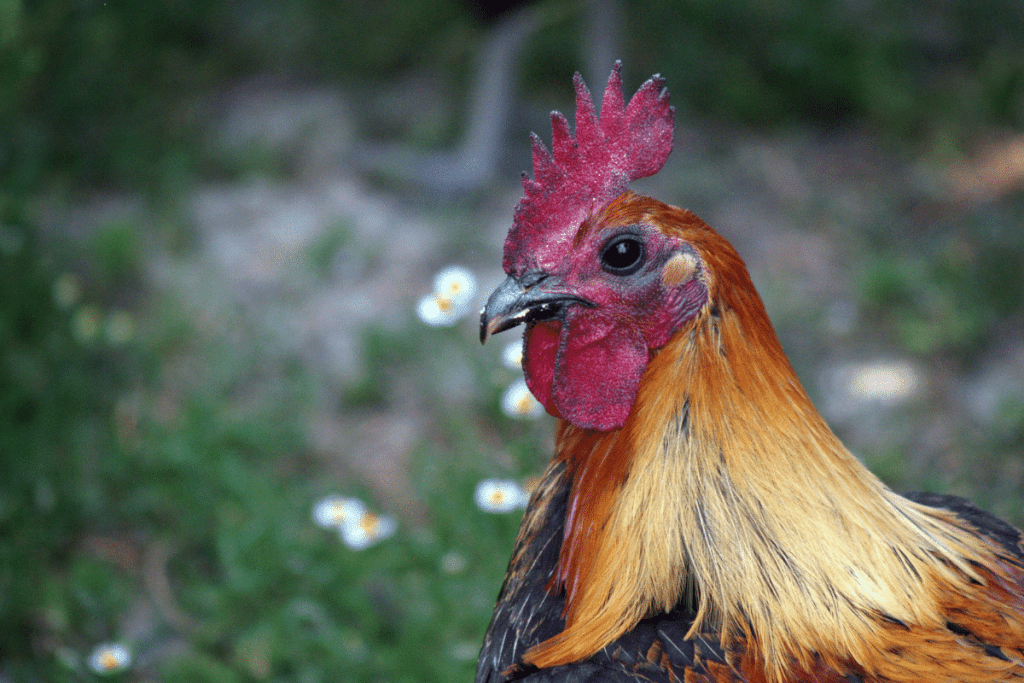The sport of cockfighting has been around since ancient times but was most popular throughout the 19th century.
It has also been outlawed in multiple countries for hundreds of years due to cockfighting’s bloody and violent aspects.
However, in the United States, it has only been federally banned since 1996, per the National Conference of State Legislatures (NCSL).
This being said, the brutal blood sport of watching roosters fighting continues to be legal in many countries throughout the world.
In some countries, cockfighting is considered a tradition and an ingrained part of their culture.
As the American Society for the Prevention of Cruelty to Animals (ASPCA) put it, “. . . the rooster’s natural fighting instincts are exaggerated through breeding, feeding, training, and vitamins.”
With any animal bred for specific purposes, be it aggressive roosters to designer dogs, there is often a preference for certain breeds.
When choosing game chicken breeds, a cockfighter (the person who owns the fighting birds) considers height, weight, physical characteristics, and aggressive nature.
Read on to learn about specific fighting breeds and what makes them so popular in cockfighting circles, legal or otherwise, across the globe.

Table of Contents
ToggleMalay
The Malay chicken is an ancient breed.
It has origins in Southeast Asia and is thought to be related to the Kulm fowl, a domesticated Northern Indian variety.
Before being used in cockfighting arenas, they were used for races.
It is among the tallest of all fighting chicken breeds, often coming in around 3′ feet high.
The standard weight of an adult Malay rooster is 9 pounds.
Malays carry their body inclined upwards.
His tail is either low or drooping.
He has long, strong, yellow legs.
He has black feathers with a sheen, short and tight to his body with little to no fluff.
His comb is cushioned or small, and his wattle is almost non-existent.
The Malay chickens exhibit very aggressive behavior.
He does not have a “flight” response in his system.
He will attack anything causing him stress, including dogs and small children.
Shamo

Shamo’s originate from Thailand, but today’s breed we are familiar with was developed in Japan.
The Shamo breed comes in second to height to the Malay, standing an average of 30″ inches tall.
While they may not be the tallest, they are known to be the heaviest, weighing around 12 pounds.
They stand almost completely vertical with a drooping tail.
They have no feathers on their throat or face.
A Shamo’s feathers come in four colors:
- Black
- Brown
- Red
- Black-breasted red
Like the Malay, he has close and short feathering.
The Shamo breed has a wide, muscular body with broad shoulders.
He has a bright red pea comb, no wattle, and yellow legs.
The Shamo rooster is so aggressive that cockerels must be separated shortly after hatching, as they will immediately fight to the death.
They like humans and will typically not be aggressive towards them.
Asil or Aseel

No list about gamefowl would be complete without Asil chickens.
Like the Malay, Asil roosters are an ancient breed from Southeast Asia.
They were brought to Europe in the late 18th century.
Many varieties of Asil have cropped up over the decades, but each is a fearsome foe.
The breed was first seen in the United States in 1887.
The average Asil chicken weighs approximately 6 pounds, slightly bigger than most modern-day fighting birds.
Their color varies greatly depending on which line they’ve bred out to and which part of the country they originate from.
There are dark, light, or speckled reds, gold, blue, grey, or pure white varieties.
They hold a distinctive upright position and are very muscular, with a slightly upheld tail.
The Asil has a small beak and broad shoulders.
Aggression runs deep in the Asil chicken breed.
So deep the hens will often fight for hours themselves.
Baby Asil chicks like to fight each other too.
The Asil was known to be slower than most of his opponents, so he was bred with faster breeds over the years.
He is an intelligent rooster and a powerhouse with precise strikes and will fight to the death if given a chance.
Sumatra
This breed of fighting cock comes from Sumatra and surrounding islands like Borneo.
They are considered jungle fowl versus game fowl, which is naturally wild.
In Indonesia, cockfighters used to gather the roosters from the wild during the mating season and put them in cockfighting arenas for entertainment.
Once the mating season was over, they’d be released to the wild.
Significantly smaller than the Shamo, Sumatra fighters typically weigh about 5 pounds.
This breed of chicken does not stand as vertical as the Malay or Shamo but still has an impressive upright posture.
Sumatra’s have darker feathers with beetle sheen and black faces, legs, spurs, skin, and bones.
There are also dun and blue varieties.
Aside from their unique pigmentation, another striking feature is Sumatra’s long, flowing tail feathers held very low.
The Sumatra breed is unique in its aggressiveness.
While other fighting cocks will battle to the death in a cockfight, he will only fight until dominance is established.
They are typically only aggressive toward their own breeds during mating season.
Radio
The Radio breed of cockfighting birds is a relatively new breed of American game chickens, having first been bred in the U.S. in 1962 by Johnny Jumper.
The story is, Jumper named the rooster breed Radio because it sings “all day like a radio.”
There are rumors in the breeding community how someone else, possibly Martin Duche or one Mrs. Sheenan, is the true originating breeder.
The prevailing belief, though, is it’s Johnny Jumper.
Another small fighter, he weighs around 4.5 pounds.
Radio breeds have a saw comb on their head, giving them a striking feature from their peers with pea or cushion combs.
He has a square head, broad back, rather dark feathers with some red mixed in, mid-length bright yellow legs, and small to non-existent spurs.
The Radio differs from other cockfighters because his tail feathers are held upright instead of low or drooping.
The fighting style of a Radio has been described as determined with quick attacks, fast on the ground, and just as agile in the air.
He is severely aggressive, considering every match necessary to fight to the death.
Old English Game

The Old English Game rooster, as the name implies, is an old breed.
The Romans first introduced them to Great Britain in the 1st century.
They made a resurgence in the early 19th century until banned in the latter part of the same century.
The breed has remained largely unchanged for the past 1,000 years.
This rooster is the smallest yet. He weighs in around only 4 pounds.
The Old English Game comes in a multitude of colors. Regardless of their feather color, they have distinctively tough, tight feathers.
When not cut, the rooster has a small saw comb.
They have long, sharp curved beaks.
This bird likes to puff his chest out and stand upright to appear more powerful when fighting.
He has a strong, large neck relative to his size and is very muscular.
This fighting bird is aggressive to anything other than its kind.
It has even been known to attack adults and kids.
He is alert, confident, noisy, and does not tolerate confinement.
While not as immediately aggressive as a Shamo, they still must be separated by the time they are 6 months old, or they will fight other roosters in the flock to death.
Hatch
Hatch is an umbrella term for a variety of bloodlines.
They are mostly American game chickens now, with roots in Ireland. Some of the varieties include:
- Yellow-Legged Hatch
- Blueface Hatch
- Gilmore Hatch
- Kentucky Hatch
- McLean Hatch, most notably
The McLean Hatch is an outlier of fighting roosters because he’s not great at cockfighting.
He’s been described as dumb, and either has rare notorious wins or, more often, loses spectacularly.
The McLean Hatch is more like a good soup base.
He’s best as a base stock to breed to get his traits of power hitting and suicide-like aggression.
Hatches are generally known for having the “straight stuff”: power, toughness, and gameness.
Most varieties of Hatch’s tend to be quite small, in the 4 to 5-pound range.
Hatch breeds are very colorful, often with yellow feathers and dark chests.
They have high-held, full plumage tails, powerful legs which may be yellow or green, and small pea combs.
The Hatch varieties have been bred to be fast, pack a power hit, and are severely aggressive finishers.
They also will not back down and would rather die than leave a fight.
The more modern Hatches like to fight, fly high, and are much faster than their McLean ancestors.
Allen Roundhead
When you read about the American game chicken of Roundhead’s, you’ll often learn about the Allen Roundhead.
Much like the Hatch breed, Roundhead is an overall term for various variations on an original bloodline.
The Allen is a world-famous fighting cock first bred in Mississippi.
This fighting breed is comparable in size to the Hatch, coming in around 4.7 pounds.
The Allen Roundhead is a striking fighting cock with a medium vertical stance, pea comb, and robust tail feathers.
They look similar to a Hatch with yellow-red feathers and a dark chest.
Most interesting is they have white or yellow legs with black spurs.
Roundheads, in general, are very smart in cockfights with a side-step unique to their breed.
As they’ve been crossbred, this style is now seen in other fighters.
They are aggressive when fighting and prefer to fly high in fights.
Whitehackle
In the mid-19th century, a many by the name of George Gilkerson imported some fowl from England.
Before his death, Gilkerson gave his birds for fighting away to Col. William Morgan.
Morgan bred those inherited fowl with a little Scottish hen in the flock, creating the first Whitehackles.
The Whitehackle is another small breed and has an average weight of 4.5 to 5 pounds.
This bird has a medium vertical stance and a straight comb.
He has broad shoulders and heavy plumage.
The feathers along his back and neck are mustard-colored, with the rest of him being spangled.
He has white feathers on his chest and a high tail.
The Whitehackle also has white legs and feet.
Some variants are all white, aside from their red combs and wattles.
Like many of his opponents, he is aggressive with the intent to kill.
They fight in a slashing style with their spurs.
He is smart and calculated in his fighting.
When a Whitehackle decides to deal a blow, he makes it count.
He is strong and has proven agility in the air and on the ground.
Further Reading: Will roosters break glass?
How useful was this post?
Click on a star to rate it!
We are sorry that this post was not useful for you!
Let us improve this post!
Tell us how we can improve this post?
